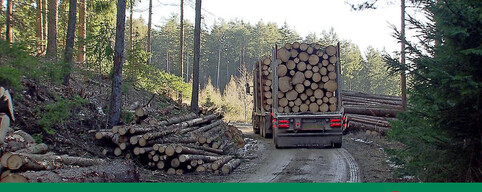

Christmas tree farms have a positive impact on the environment. According to ecologists, they can perform the same functions as young forests.
At a time of climate crisis, when keeping the planet cool and oxygenated is extremely important, it seems ineffective to continue cutting down trees. The New York Times reports that growing Christmas trees rather than artificial alternatives can have numerous environmental benefits.
Andy Finton, a forest ecologist at the Nature Conservancy in Massachusetts, notes: "Christmas tree farms can function like young forests: they absorb carbon from the atmosphere, help clean the air and, in many cases, provide drinking water. They preserve a natural landscape that can become impenetrable to nature."
According to Finton, usually 2-3 seedlings are planted in place of each tree that is cut down.
Additionally, according to Jill Sidebottom, a spokeswoman for the National Christmas Tree Association, Christmas tree farms are often located on unused farmland.
Andy Finton points out that in a time of rapid decline of natural forests, tree farms can provide habitat for wildlife, particularly birds and mammals that prefer open spaces on the edges.
A study from Germany published in 2022 showed that conifer plantations can provide safe refuges for four endangered bird species: sloths, wood lizards, larks and yellowhammers. The vegetation cover of such plantings can be beneficial for pollinating insects.
Tom Norby, head of the Pacific Northwest Christmas Tree Association, says only a small percentage of trees are cut down each year—about 90 percent of farm stands continue to grow and remain accessible to animals.
“On our own farm, I watched deer, rabbits, pygmy owls, bears, coyotes and cougars follow the elk and forage for food in our fields while the mountain ridges were still covered in snow,” the man shares.
Nigel Manley, director of operations for the New Hampshire Forest Conservation Society, notes that after the establishment of Christmas tree farms, they began seeing "interesting phenomena" among the rows of fragrant balsam and Fraser firs.
In the spring, nesting species began to appear in the areas near the young trees: bobolink songbirds, deer and woodcock. Bobolinks stopped here during their migration to and from South America. Eleni hid their children among the tall grass. Woodcocks used open areas for mating flights and raising chicks.
Let us remind you that in Germany a couple decorated their house with 555 Christmas trees, setting a world record.



